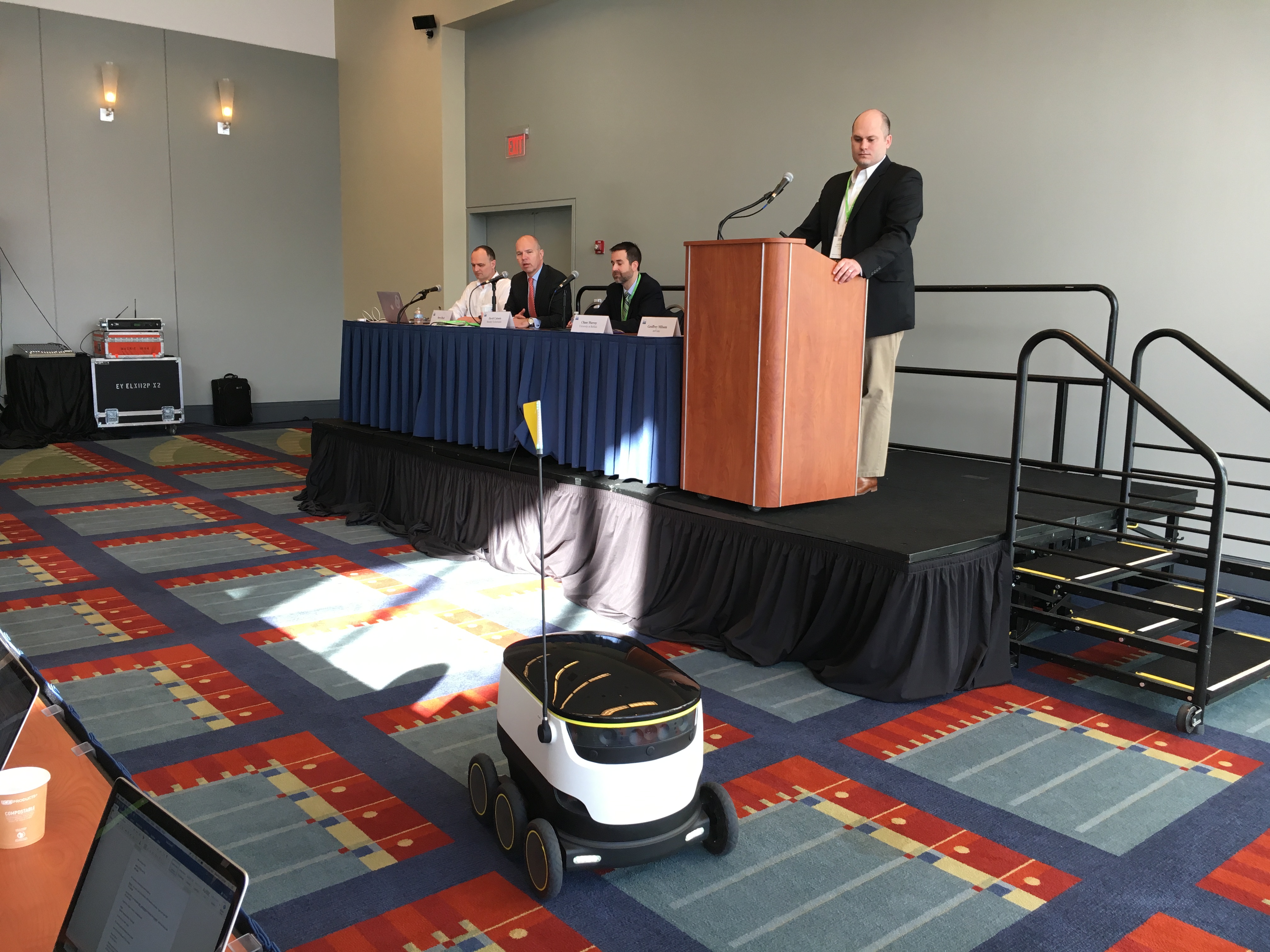 The convergence of transportation and technology is often proclaimed as an imminent future for the industry, something that remains just barely out of reach.
The convergence of transportation and technology is often proclaimed as an imminent future for the industry, something that remains just barely out of reach.
This was the centerpiece of the final report released by the U.S. Department of Transportation (USDOT) under Anthony Foxx titled Beyond Traffic 2045, focused on the safety and efficiency applications of technology in the coming decades. Meanwhile, the first meeting of the full House Transportation & Infrastructure Committee this year was titled Building a 21st Century Infrastructure for America.
Yet the technologies that these federal initiatives discuss are not decades away. The Washington, DC area and many other regions have already begun to integrate innovative technologies into their transportation networks.
At the Eno Center for Transportation’s Capital Convergence on January 26, experts from the national capital region and beyond came together to share their best practices and lessons learned in implementing the technological solutions available to us today.
“Transportation is the means to an end, not an end in itself. We say that a lot, but oftentimes forget it,” said Robert Puentes, President and CEO of Eno. “But now, new trends are changing the purpose, mean, and function of our transportation system.
“At Eno, we’re addressing these ideas head on because this is happening across the country and across every mode.”
The conference was split into the following sessions where experts from organizations ranging from startups to transit agencies to the federal government shared their experiences and insights.
The day was focused exclusively on the practical steps for improving transportation networks through the integration of emerging and existing technologies such as smart city infrastructure, autonomous vehicles, and transportation network companies (TNCs).
 Among the featured organizations was Starship Technologies, which is launching the United States’ first robot ground delivery service in Washington, DC after the city passed legislation for a pilot project in 2016.
Among the featured organizations was Starship Technologies, which is launching the United States’ first robot ground delivery service in Washington, DC after the city passed legislation for a pilot project in 2016.
The conference concluded with a working session where attendees were challenged to apply the lessons and best practices they had learned throughout the day to design a strategy to deploy autonomous vehicles in the Washington, DC area.
The session was led by Kelley Coyner from the Center for Regional Analysis, Schar School of Policy and Government, George Mason University & MobilityE3, and Lisa Nisenson from Alta Planning and Design and Greater Places.
Attendees contributed their thoughts and insights to develop an autonomous vehicle deployment strategy that will be unveiled in the coming month.
Key takeaways from each session are now all available online:

 The convergence of transportation and technology is often proclaimed as an imminent future for the industry, something that remains just barely out of reach.
The convergence of transportation and technology is often proclaimed as an imminent future for the industry, something that remains just barely out of reach. Among the featured organizations was Starship Technologies, which is launching the United States’ first robot ground delivery service in Washington, DC after the city passed legislation for a pilot project in 2016.
Among the featured organizations was Starship Technologies, which is launching the United States’ first robot ground delivery service in Washington, DC after the city passed legislation for a pilot project in 2016.

